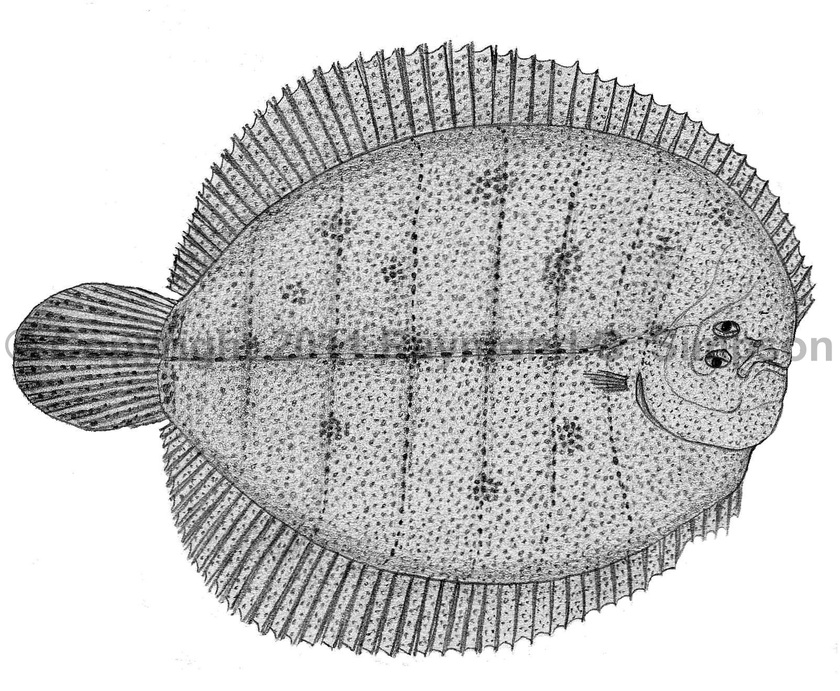
Common Name
Mucuri Sole
Year Described
Ramos, Ramos & Lopes, 2009
Identification
Dorsal Fin: 48-57
Anal Fin: 38-42
Caudal Fin: 13-16
Pectoral Fin: 3-6 (ocular side only)
Pelvic Fin: Ocular side 5, blind side 4-5
Longitudinal Scales: 57-62
Vertebrae: 9 precaudal, 18 caudal; 27 total
Body deep and oval. Eye fairly large (twice interorbital distance). Ocular side anterior notril short with small fimbriae. Lower jaw with numerous fimbriae. Cirri on upper lip and nasal area. Branchiostegal membrane slightly connected to isthmus (unique to this species and freshwater A. novoae). Scales ctenoid, present everywhere except nasal area, lips, fin membranes, and margins of preopercle and opercle. Cirri present on median fin rays.
Color
Light brown to gray with scattered dark speckles and blotches over entire head, body, and fins (often coalesced to form larger spots). Vertical lines usually faint. Fin rays more pigmented than membranes, and spots are more elongated. Blind side pale, often with dark blotches around caudal base.
Size
Size ranges from 69-91mm (17 specimens in original description).
Habitat
Estuarine over soft bottoms.
Range
Northeastern Brazil: endemic to the Mucuri River system and delta.
References
Ramos, R.T.C. , T.P.A. Ramos, and P.R.D. Lopes. 2009. New species of Achirus (Pleuronectiformes: Achiridae) from northeastern Brazil. Zootaxa No. 2113: 55-62.
Other Notes
Closest to Achirus novoae of the Orinoco River basin in that these are the only two Achirus in E. South America that have the connection between the branchiostegal and isthmus. Achirus mucuri differs from that species in geographical range, and also the presence of complex, ramified labial fimbriae and an infraorbital canal that wraps around the ventral margin of the lower eye (Ramos et al., 2009).